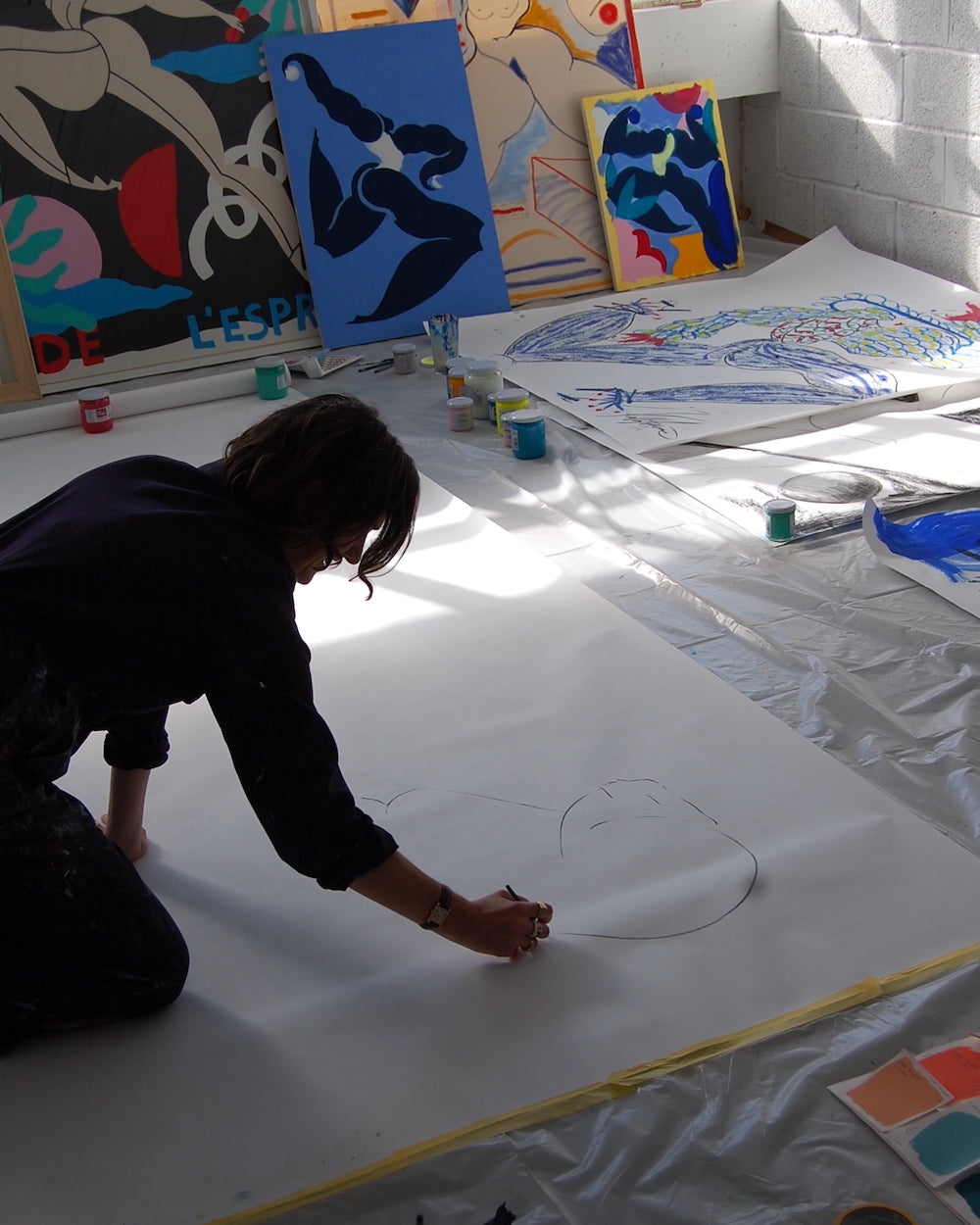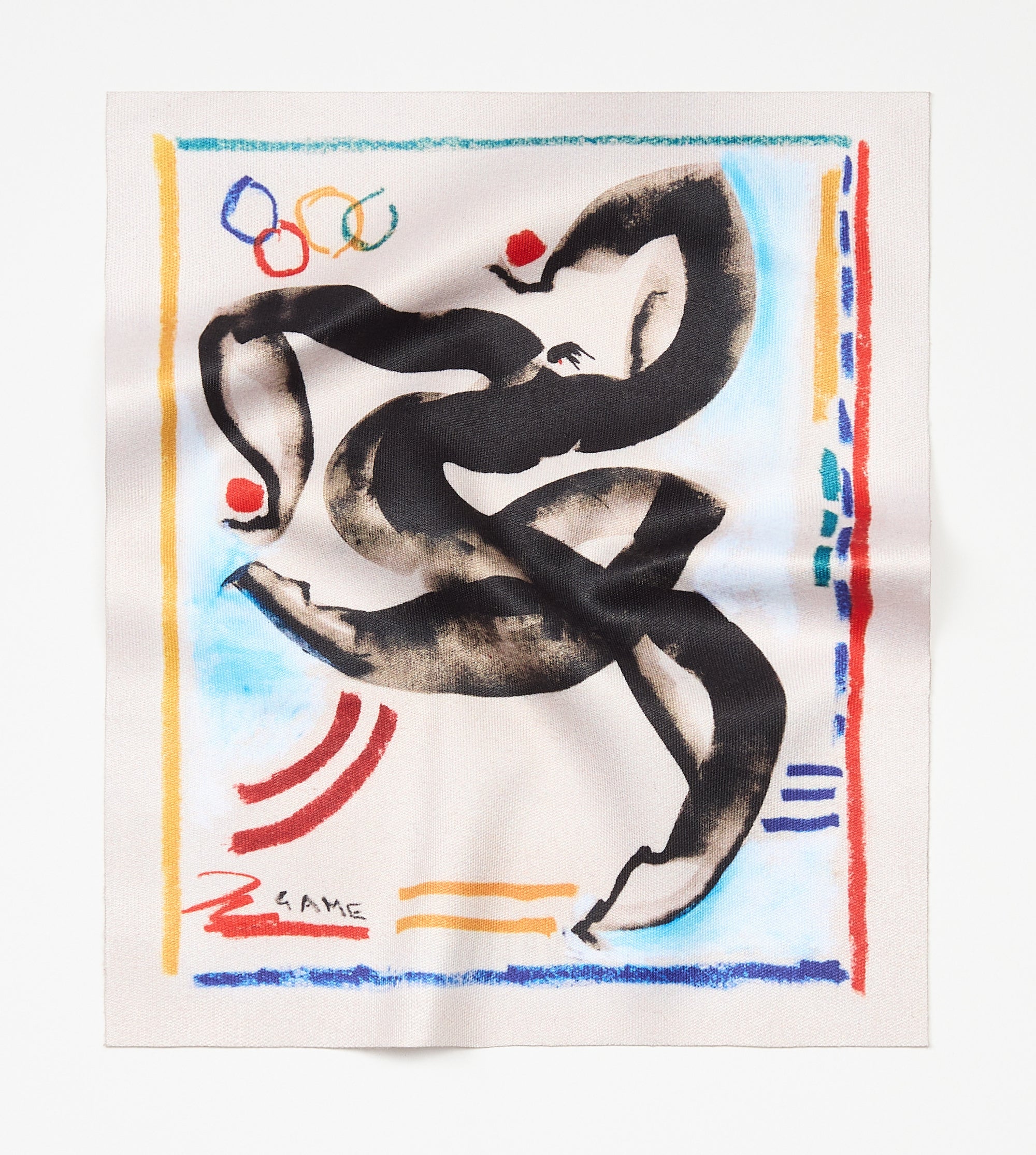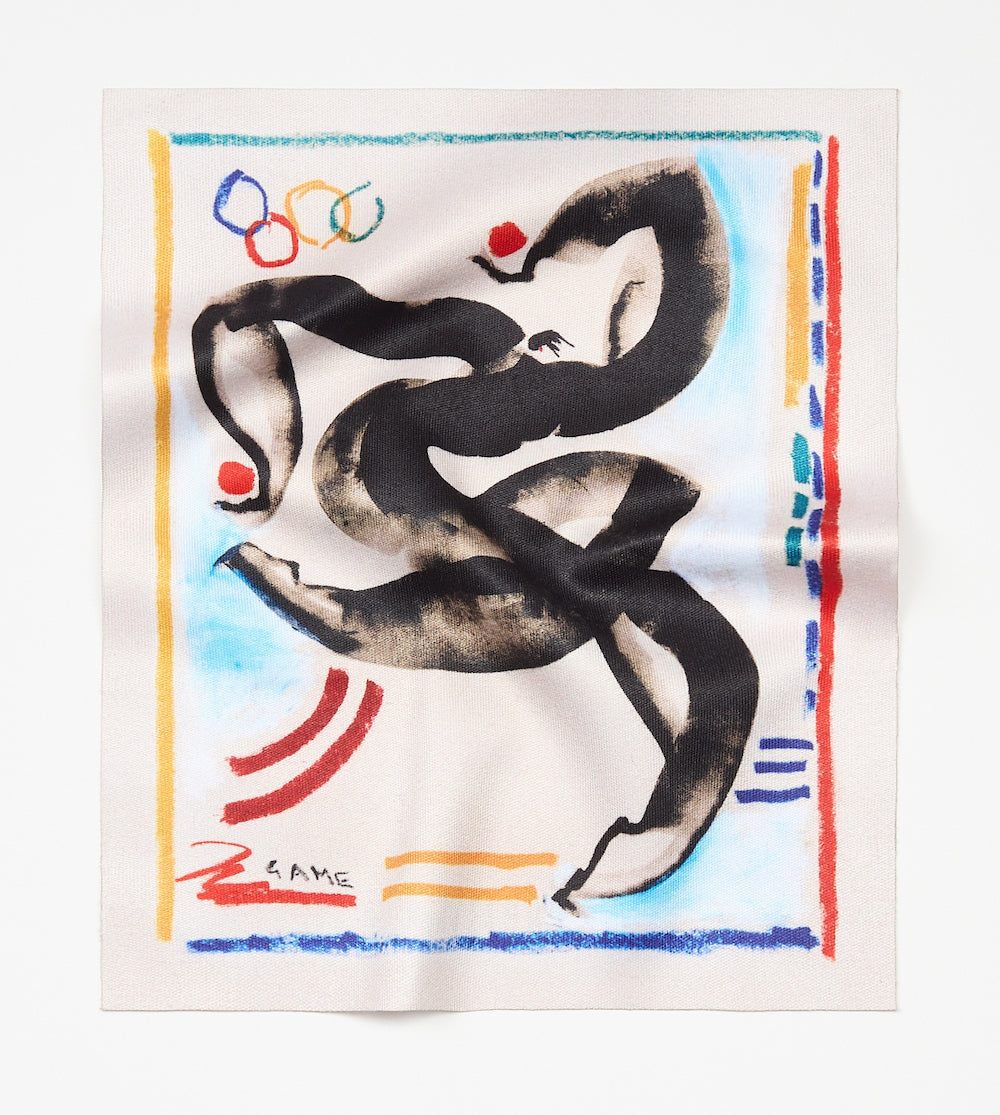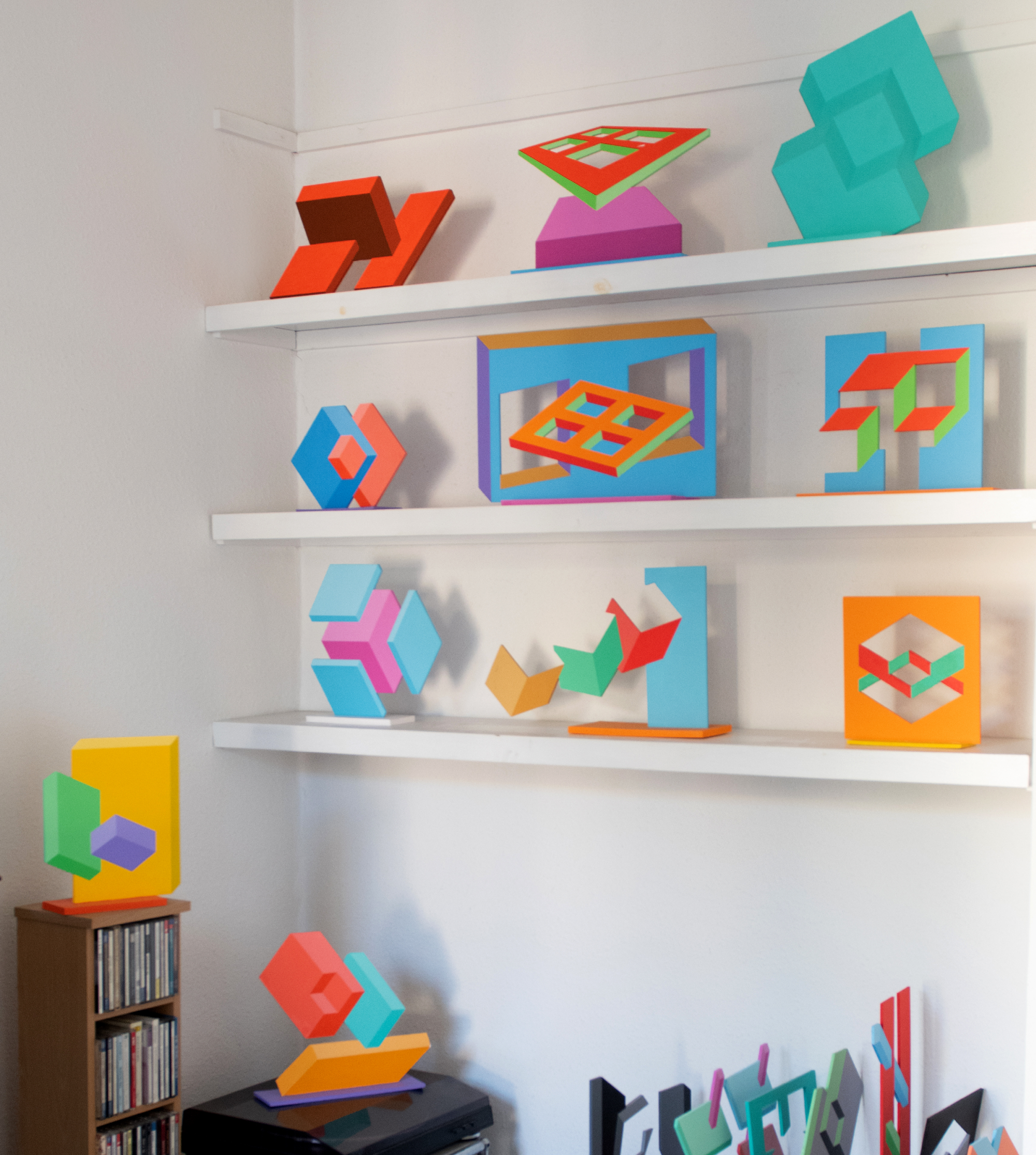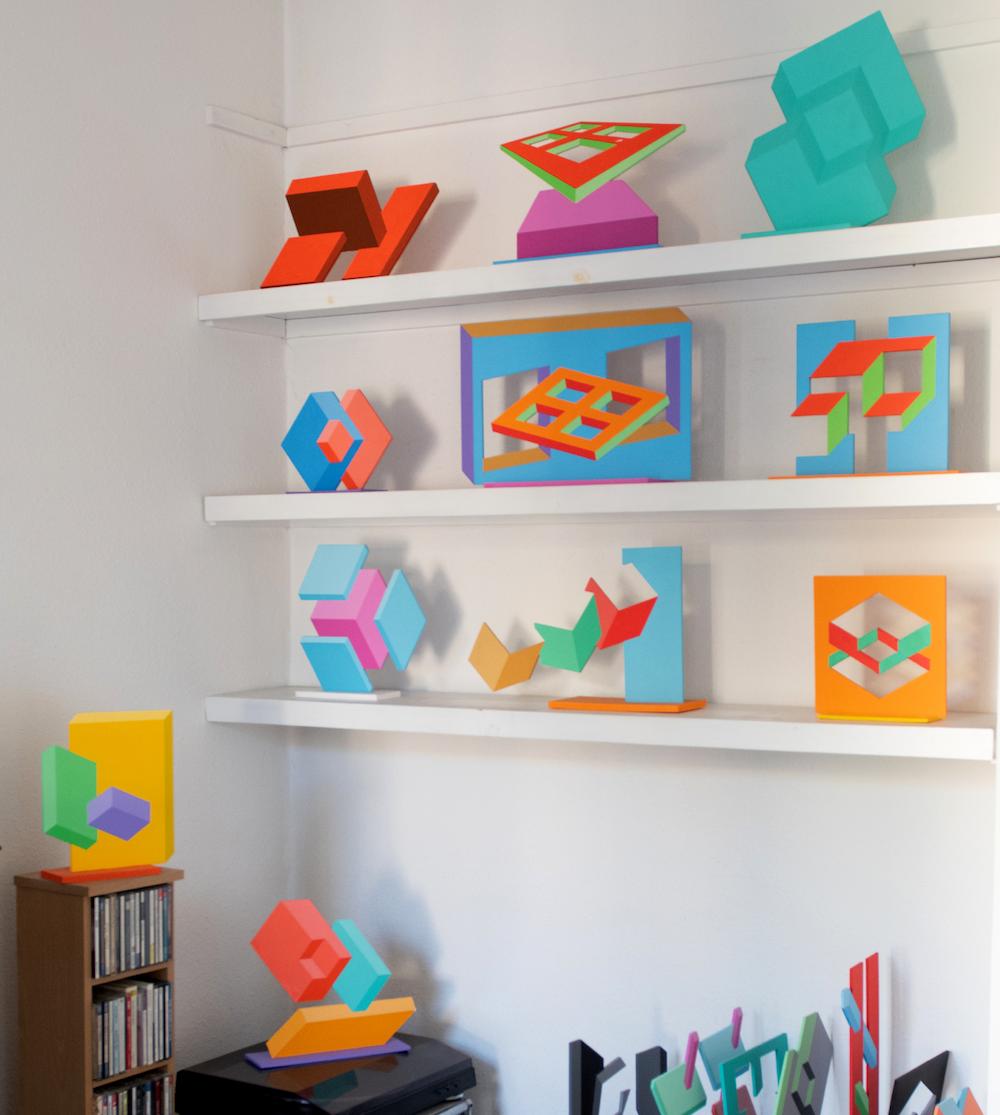Kelly Anna has created her vital energetic artworks for trainers, football pitches, stickers, and now a new Cubitts cleaning cloth. We sat down with Kelly to discuss her work, sport, dance, the nude, and sex therapy.
Cubitts: What three words would you use to describe your work?
Kelly: Bold, powerful, energetic.
C: 'Energetic' is a good place to start – how do you go around capturing that movement?
K: Capturing movement has always been a really kind of integral part in my process. I actually started out as a dancer. My family were all ballroom and Latin dancers, and my dad was also an artist. He focused a lot on figurative work, and he taught me from a very young age how to capture that movement. I'd go to dance competitions and sketch the dancers and watch them move around the floor. So I think it just was quite a natural thing in my work to pull that history in.
Cubitts: What three words would you use to describe your work?
Kelly: Bold, powerful, energetic.
C: 'Energetic' is a good place to start – how do you go around capturing that movement?
K: Capturing movement has always been a really kind of integral part in my process. I actually started out as a dancer. My family were all ballroom and Latin dancers, and my dad was also an artist. He focused a lot on figurative work, and he taught me from a very young age how to capture that movement. I'd go to dance competitions and sketch the dancers and watch them move around the floor. So I think it just was quite a natural thing in my work to pull that history in.
C: And sport, more generally, is also a key theme in your work. Could you tell us about that?
K: Growing up, I did a lot of sports. I did gymnastics, karate, swimming, every type of sport. It's something I kind of understand. The discipline you need in sport, it’s even kind of the same discipline you need to be in the art world. So it naturally worked its way into my work.
C: Tell us about the role of the female body in your work.
K: I've always been obsessed with Olympic memorabilia. Absolutely obsessed with it. I always look at the old posters from the very beginning, but it always heroed the male figures. I always saw these strong male figures, but I thought: where are the females?
So that's one part. And the other side is that I came from fashion illustration, and back when I was doing that, the figures were all very, very similar. It was one body form. So when I got going with my work I’d go back to dance schools and actually go into the gym and watch people work out. Not creepy at all, by the way. But I really loved the idea of working directly with movement, which kind of turned into the shape work.
K: Growing up, I did a lot of sports. I did gymnastics, karate, swimming, every type of sport. It's something I kind of understand. The discipline you need in sport, it’s even kind of the same discipline you need to be in the art world. So it naturally worked its way into my work.
C: Tell us about the role of the female body in your work.
K: I've always been obsessed with Olympic memorabilia. Absolutely obsessed with it. I always look at the old posters from the very beginning, but it always heroed the male figures. I always saw these strong male figures, but I thought: where are the females?
So that's one part. And the other side is that I came from fashion illustration, and back when I was doing that, the figures were all very, very similar. It was one body form. So when I got going with my work I’d go back to dance schools and actually go into the gym and watch people work out. Not creepy at all, by the way. But I really loved the idea of working directly with movement, which kind of turned into the shape work.


C: And the nude is a subject with a complicated history of its own - what sort of baggage does it bring to working with the nude today?
K: It does come with a lot of baggage, but when I create my figures I feel really powerful. I feel really strong. Not the way they look, but they have a feeling about them that I feel inside of me, especially being a new mum. So for me it’s important to get that feeling across, in the composition, in how the figure moves.
C: Do you think you present an idealised version of the human body?
K: Is there an idealised version of the human body? Because what’s perfect to someone, is not to someone else. So I think it’s more about feeling. If you're feeling confident in whatever body you're in, what does it matter?
C: Would you consider your forms exaggerated?
K: They’re definitely exaggerated. Most of my figures have very small heads and tiny feet. But that was just how I got those figures down on paper. It just felt natural. It’s developed like that over the years, who knows where they’ll end up?
K: It does come with a lot of baggage, but when I create my figures I feel really powerful. I feel really strong. Not the way they look, but they have a feeling about them that I feel inside of me, especially being a new mum. So for me it’s important to get that feeling across, in the composition, in how the figure moves.
C: Do you think you present an idealised version of the human body?
K: Is there an idealised version of the human body? Because what’s perfect to someone, is not to someone else. So I think it’s more about feeling. If you're feeling confident in whatever body you're in, what does it matter?
C: Would you consider your forms exaggerated?
K: They’re definitely exaggerated. Most of my figures have very small heads and tiny feet. But that was just how I got those figures down on paper. It just felt natural. It’s developed like that over the years, who knows where they’ll end up?


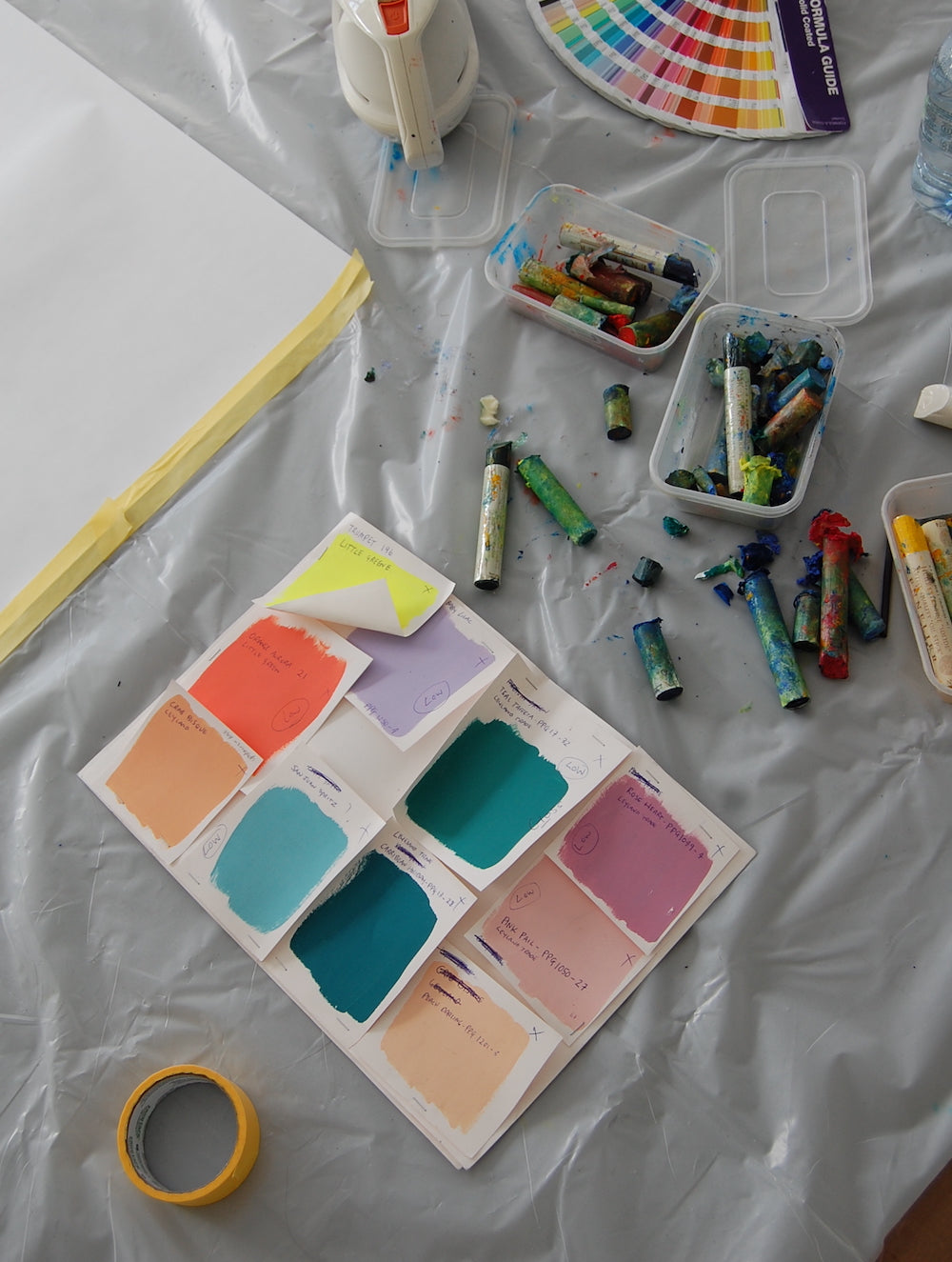
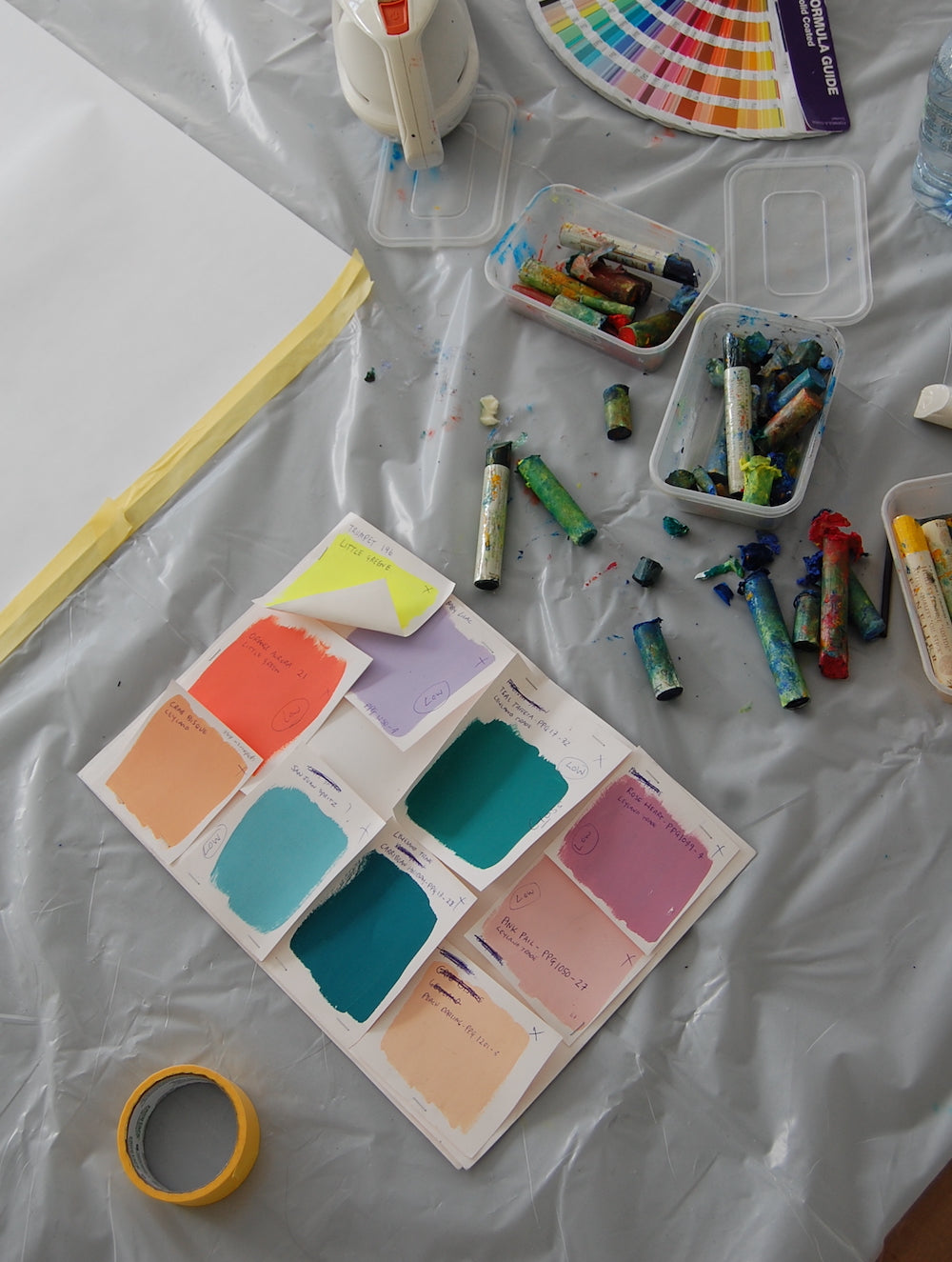
C: And would you say your work is characteristically modern?
K: I like to think so. A lot of the references are from hundreds of years ago, and it’s the same with all sorts of new art. You’re taking bits of the past and trying to move it forward.
C: You've made a lot of work for brands, to decorate trainers, football stickers, now a lens cleaning cloth. What does it mean to create art that features on useful objects?
K: Well I started out as a fashion illustrator, and moved into print design. So I worked on apparel and then footwear. And I always loved seeing my work go from a sketch on a bit of paper to finally seeing it in a product. And that's what I love about my work. I can see it on hundreds of different products, but it still feels like that same world.
C: Tell us about the work that is featured on the cleaning cloth.
K: That was actually one of my first roller canvas studies. I was trying to figure out a way to get my figures from that kind of static form onto these bits of canvas. So I just got the roller out and started moving with it and it just created these new pieces.
K: I like to think so. A lot of the references are from hundreds of years ago, and it’s the same with all sorts of new art. You’re taking bits of the past and trying to move it forward.
C: You've made a lot of work for brands, to decorate trainers, football stickers, now a lens cleaning cloth. What does it mean to create art that features on useful objects?
K: Well I started out as a fashion illustrator, and moved into print design. So I worked on apparel and then footwear. And I always loved seeing my work go from a sketch on a bit of paper to finally seeing it in a product. And that's what I love about my work. I can see it on hundreds of different products, but it still feels like that same world.
C: Tell us about the work that is featured on the cleaning cloth.
K: That was actually one of my first roller canvas studies. I was trying to figure out a way to get my figures from that kind of static form onto these bits of canvas. So I just got the roller out and started moving with it and it just created these new pieces.
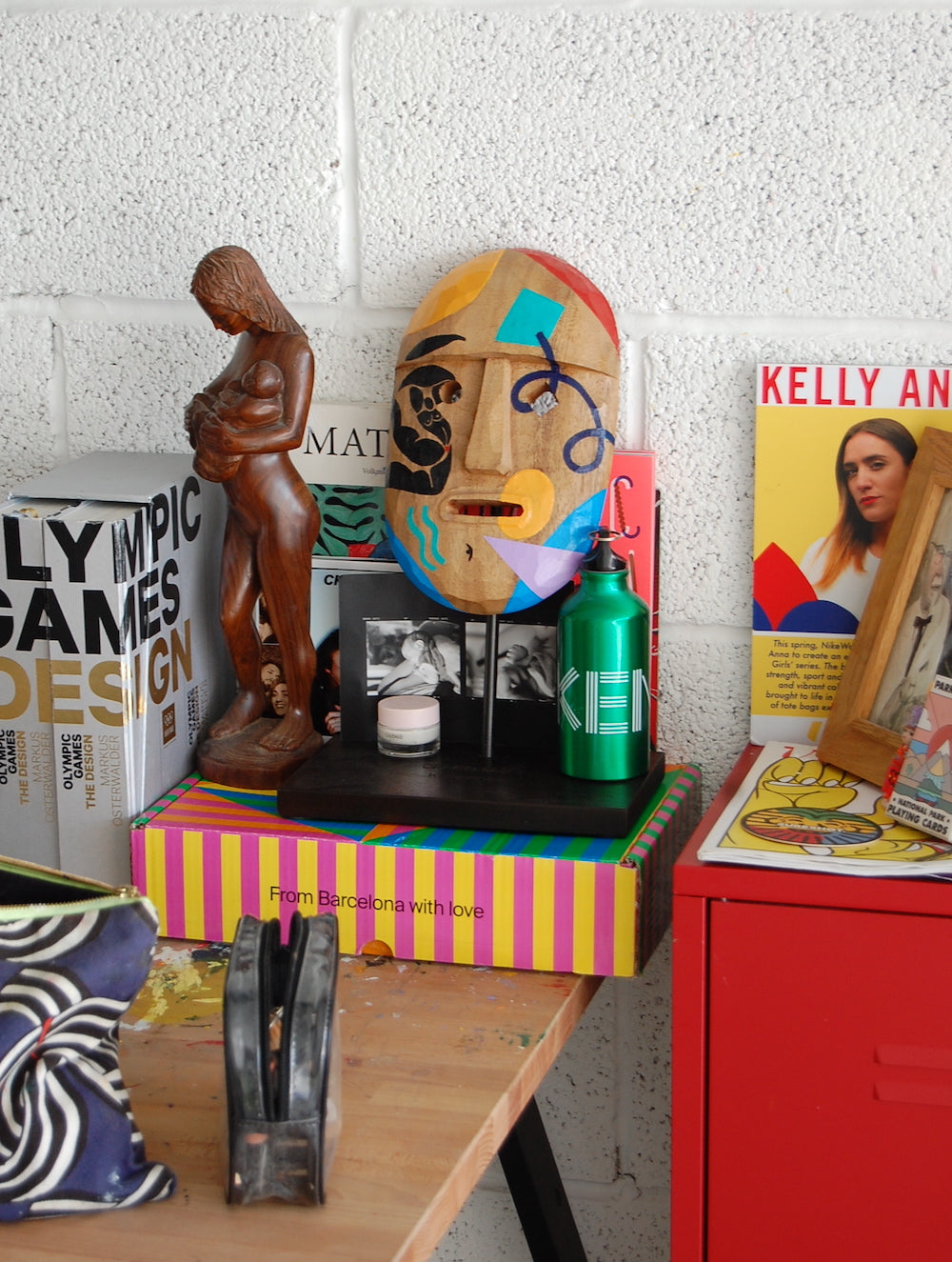
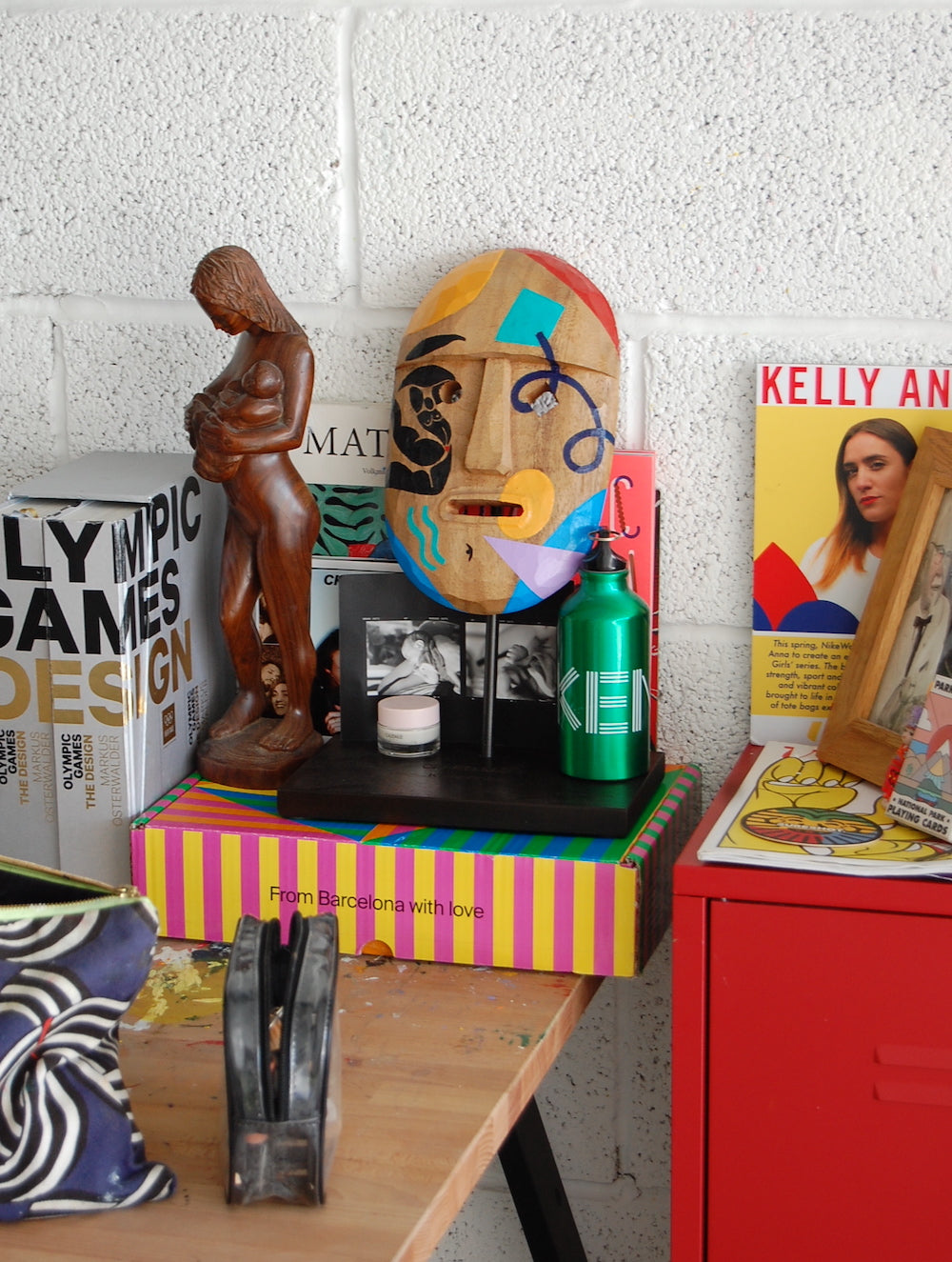
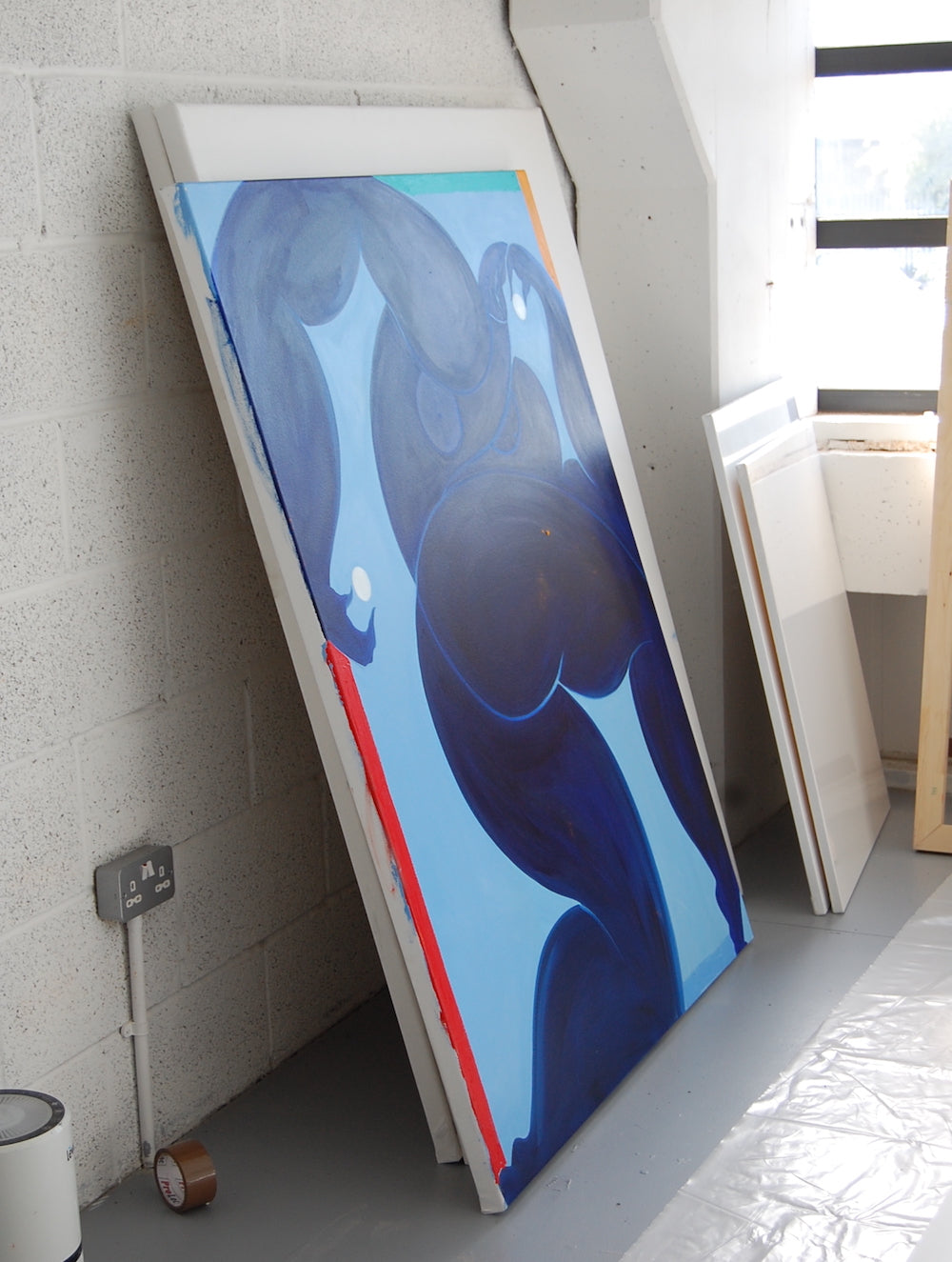
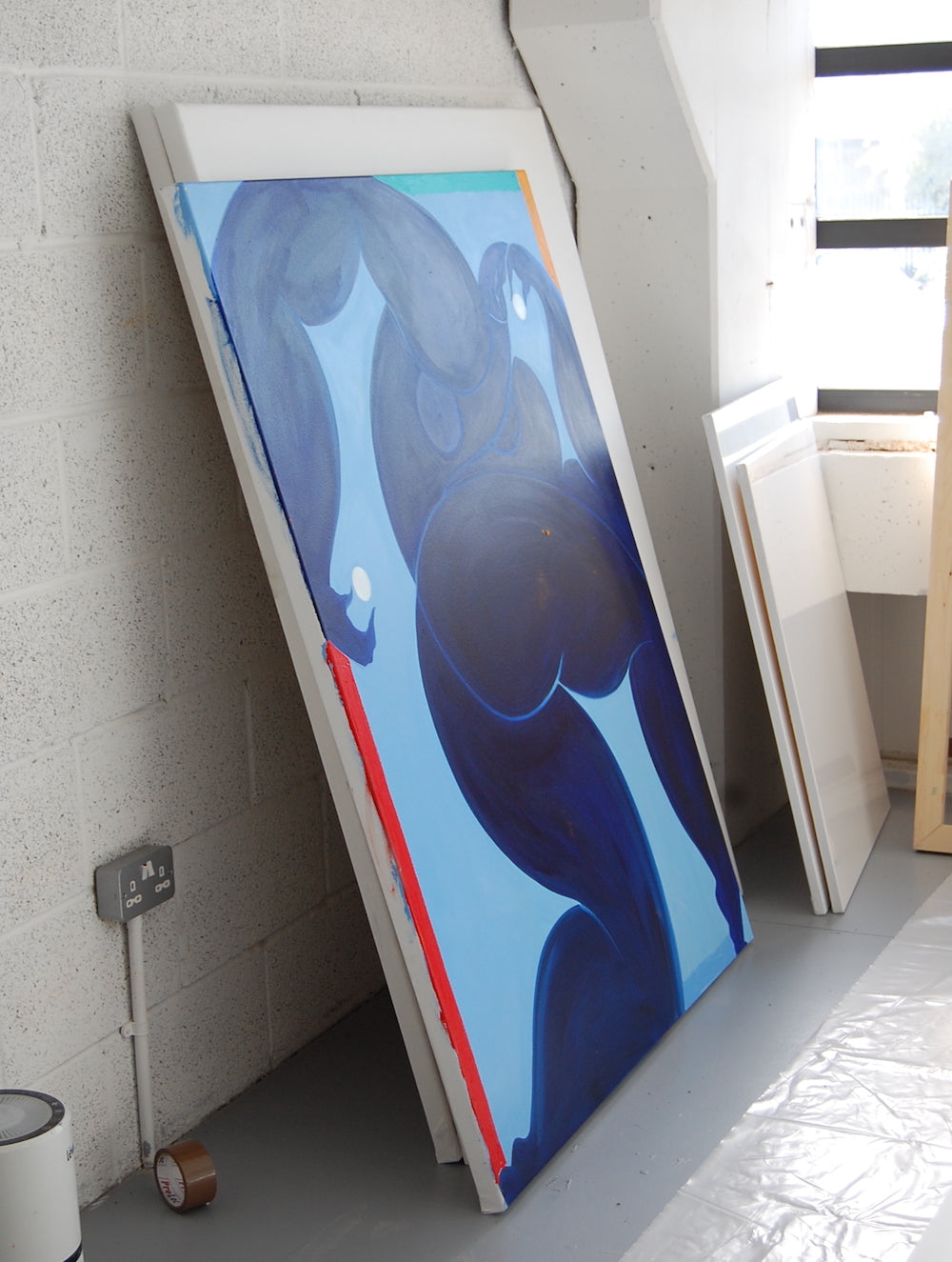
C: And why have you chosen Women in Sport as your charity?
K: They’re usually the charity that I work with because they are really doing great things. They're supporting young girls in sport. It’s a much bigger topic now, but back when I was in school, a lot of girls dropped out by the time they were 12, 13, starting to feel uncomfortable. There weren’t really the same heroes that there are today. And sport is hugely important to keep girls feeling confident, teaching them discipline. Sport teaches you a lot about life.
C:What would you be if you weren't an artist?
K: I've thought about this a lot, actually. I would either be a sex therapist or a carpenter.
C: Why those in particular?
K: I have no idea about it really, I just find people who talk about sex therapy really interesting. No hang on I’m just going to say carpentry. Let’s do that again. If I weren’t an artist I’d probably be a carpenter.
[Pause]
Or a sex therapist.
K: They’re usually the charity that I work with because they are really doing great things. They're supporting young girls in sport. It’s a much bigger topic now, but back when I was in school, a lot of girls dropped out by the time they were 12, 13, starting to feel uncomfortable. There weren’t really the same heroes that there are today. And sport is hugely important to keep girls feeling confident, teaching them discipline. Sport teaches you a lot about life.
C:What would you be if you weren't an artist?
K: I've thought about this a lot, actually. I would either be a sex therapist or a carpenter.
C: Why those in particular?
K: I have no idea about it really, I just find people who talk about sex therapy really interesting. No hang on I’m just going to say carpentry. Let’s do that again. If I weren’t an artist I’d probably be a carpenter.
[Pause]
Or a sex therapist.
